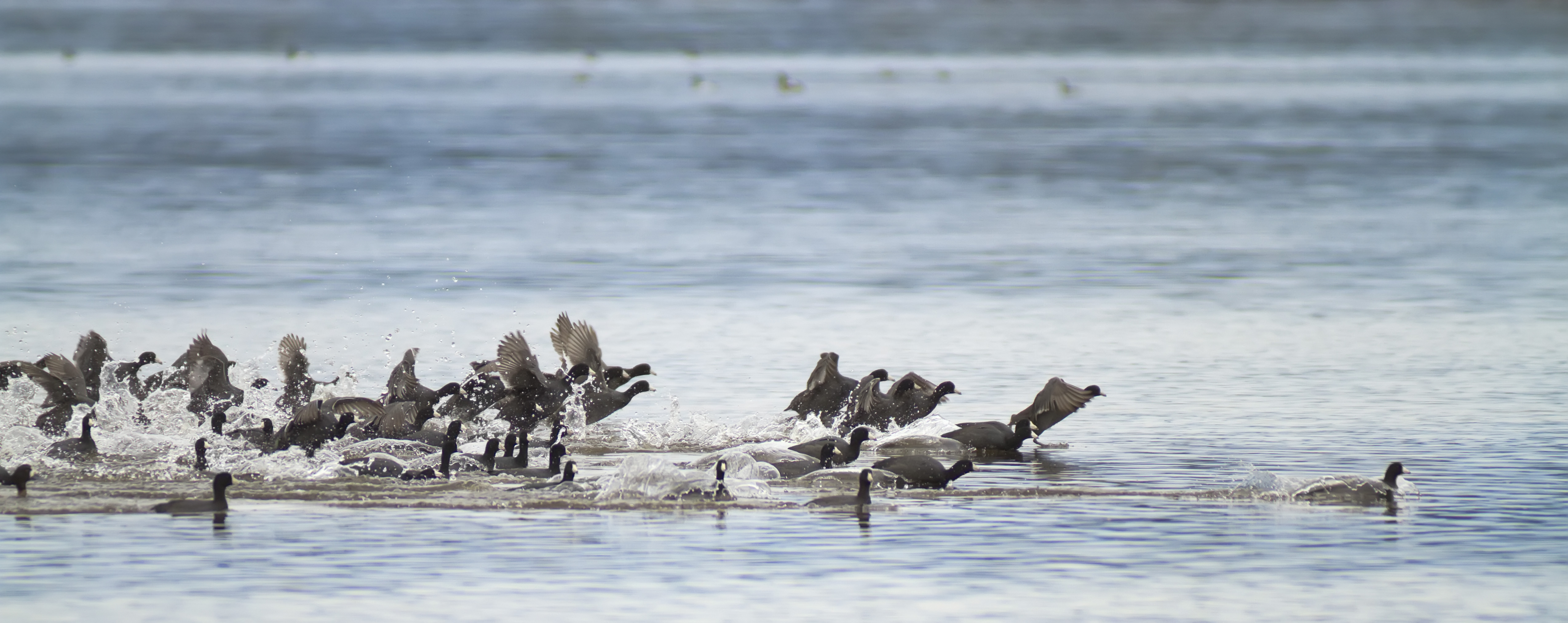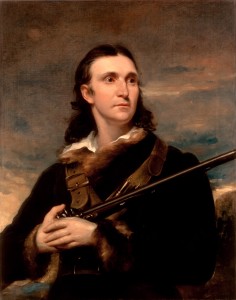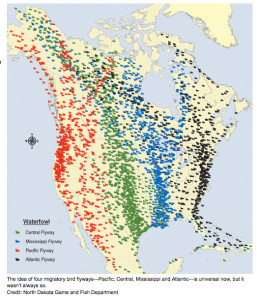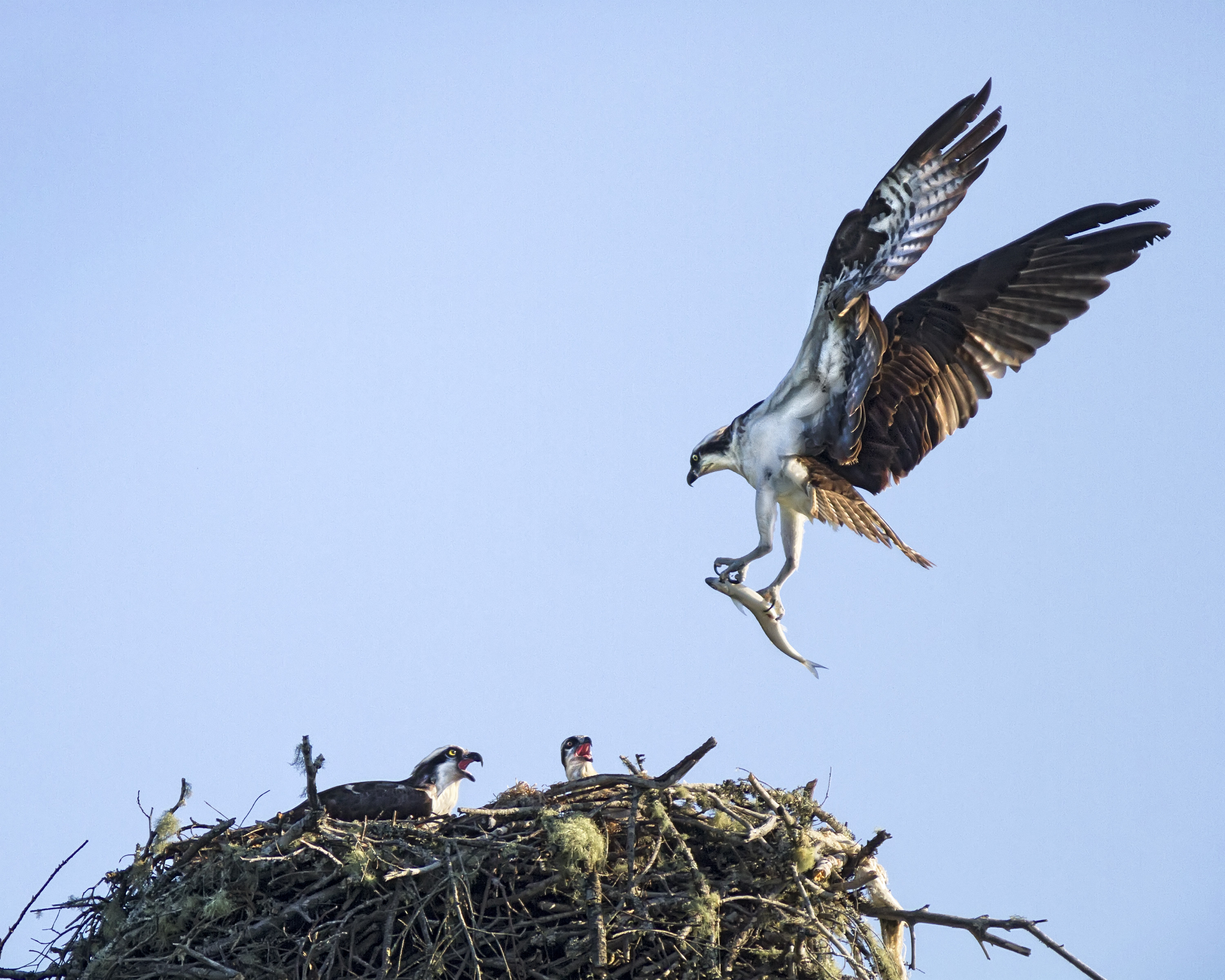The Flyways of the American Continents

An introduction to my new series
It’s early May and the birds have arrived here in Del Norte County, California to prepare their nests and lay their eggs. Still others have continued north, having used our beaches, marshes and fields as resting places along the way. So, I thought it would be a good time to introduce a series of photo blog articles I’ve been thinking about doing for a long time. Each will be about one of the many birds I photograph along the Pacific Flyway in Northern California and Southern Oregon. But first, I’d like to talk a little bit about the flyways, how they were discovered by science and why they are there to begin with.
The founding of the Flyway concept

The discovery of the fact that birds use the same migration routes year after year came from the banding of birds in the early 1800s. In 1803, ornithologist John James Audubon tied strings to the legs of Eastern Phoebes before they left for their fall migration. When the same banded birds returned in the spring, he discovered that birds use the same nesting site every year.
Bird banding really took off, so to speak, in the early 1900’s. As a result, the idea of flyways as a pattern began to gel in the minds of scientists. In 1920, biologist and pilot Frederick Lincoln was hired by the U.S. Bureau of Biological Survey at Washington, DC. to organize the burgeoning bird banding program.
Lincoln wrote, “Recovery of banded ducks and geese accumulated so rapidly, that by 1930 it was possible to map out the four waterfowl flyways’ great geographical regions, each with breeding and wintering grounds connected by a complicated series of migration routes.”
Lincoln was in charge of the bird banding program from 1920 to 1946 and organized the many banders and researchers involved in setting the standards for scientific research and management. His ability to fly his plane with the birds as they migrated was a plus for the program.
“Before Lincoln, the agency just didn’t have much faith in combining biology with aviation,” says Park Service Historian Mark Madison. “The idea of making like the birds in order to study them seemed like an extravagance.”
By 1935, Lincoln had fully developed the Flyways concept.
The four migratory flyway routes of the American Continents

As you can see, the flyways aren’t exactly linear but do follow a certain pattern. As far as where all these lines are going, well, I won’t bore you with a geography lesson. I’ll assume you know all that already. And I promise this will be the only fuzzy photo I’ll ever post, but I thought it was pretty straightforward for a lesson in patterned meandering.
The Flyways of the Americans are as follows: Orange-Pacific Flyway Green-Central Flyway, Blue-Mississippi Flyway, and Black-Atlantic Flyway.
Requirements of migrators
What would a flock of birds need to fly, say, from Panama to the Arctic Circle in Northern Alaska? They’d need plenty of food, water, safe resting places and the presence or absence of a few key features for easy flying: favorable wind currents, lack of the highs and lows of mountainous areas and the absence of large desert stretches.
Why do they meander so much? It all depends on the weather, the availability of food and water sources, changes in resting areas due to human population growth and the threat of predators.

Why migrate at all wouldn’t it be better to just stay home?
The two main reasons birds migrate is because of food and breeding. It’s all about survival. If they stayed in the same place all year, soon their food sources would become depleted in the same way overgrazing can occur with mammals. In the spring, food regenerates in the north and becomes abundant. In the fall, when birds return south, their food sources will have replenished themselves. Where and when birds migrate is all about finding suitable conditions for breeding and raising their young. Habitat for breeding colonies and adequate shelter is just the beginning. Growing chicks require constant feeding. Plentiful food sources is a must for parents who work tirelessly throughout the day to feed themselves and their young.
The importance of conservation along the flyways
How would you feel if you flew home from your vacation tired and hungry and found that your house was completely gone? Everyone in the neighborhood seems to be angry with you and they do everything they possibly can to make you go away as quickly as possible. So off you go. Still hungry you head to the local grocery store that you’ve always known was there but, alas, it’s gone! With no place to go, nothing to eat and no one who cares enough to support you, you eventually die. End of story.
I will talk about conservation in another installment.
